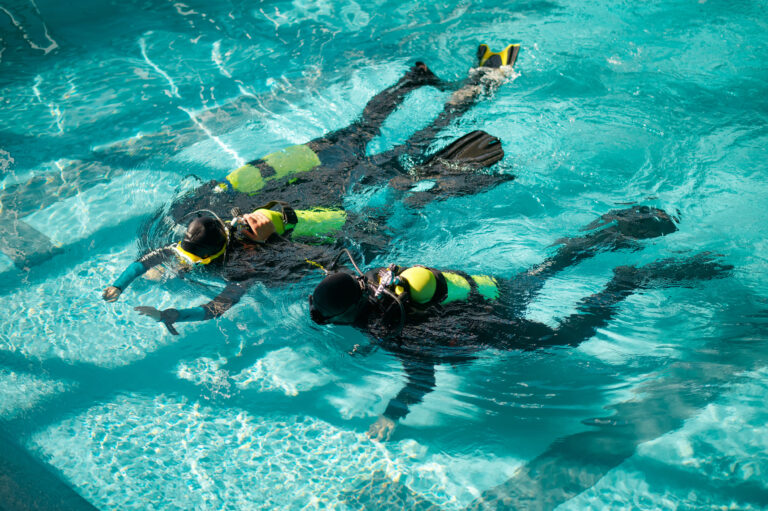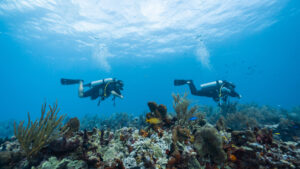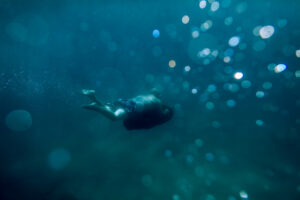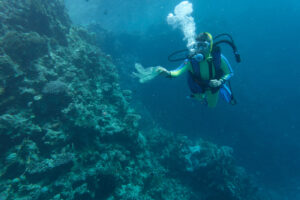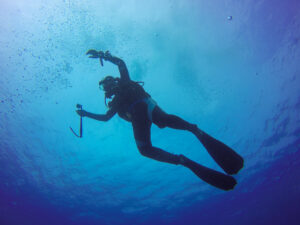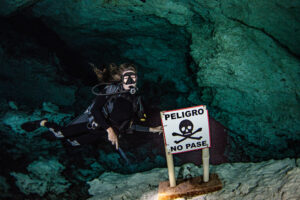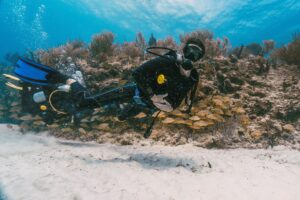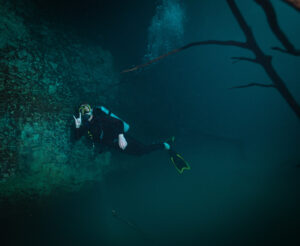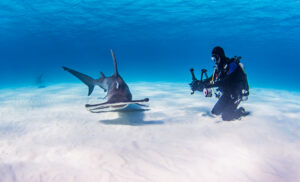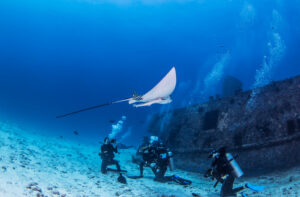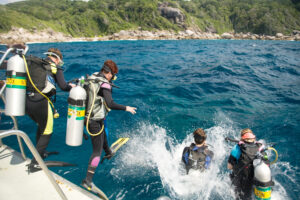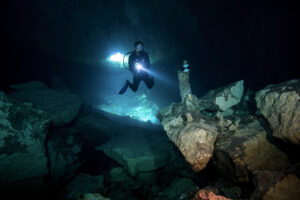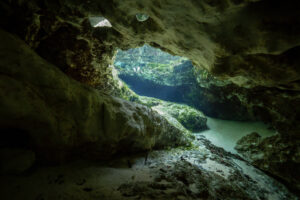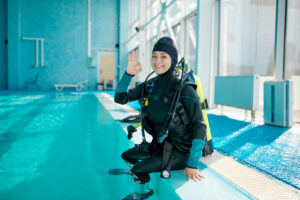What is a Dive Profile?
A dive profile is a detailed plan that outlines the depth and duration of a scuba dive, including the rates of descent and ascent, and any necessary decompression stops. It is a crucial element in scuba diving that ensures safety by managing the diver’s exposure to pressure changes and the absorption and release of inert gases like nitrogen. The primary purpose of a dive profile is to minimize the risk of decompression sickness (DCS), also known as “the bends,” and other pressure-related injuries. Dive profiles are essential for both recreational and technical divers, helping them plan their dives to avoid exceeding safe limits.
Historical Development of Dive Profiles
In the early days of scuba diving, planning dives was a rudimentary process, often based on trial and error. Divers relied on their instincts and basic guidelines without a formalized system to manage their exposure to underwater pressure. As the understanding of decompression theory grew, the need for more structured dive planning became apparent. The early 20th century saw the development of decompression tables, which provided a systematic way to plan dives and decompression stops based on depth and time spent underwater.
These tables were a significant advancement but had limitations, primarily being static and often conservative to ensure safety. Divers had to follow predetermined schedules, which didn’t account for changes in their dive plans. With the advent of dive computers in the late 20th century, dive profiles became more flexible and accurate. These devices could monitor a diver’s depth and time in real-time, adjusting the dive profile dynamically to reflect actual conditions. This technological leap allowed for more complex and safer dive planning, accommodating multilevel dives and reducing the risks associated with decompression sickness.
Definition and Components of a Dive Profile
A dive profile is essentially a graph or chart that represents the diver’s journey underwater. It includes several key components that are vital for planning a safe dive. The primary components are depth, time, ascent rate, gas mixtures, and decompression stops. Depth indicates how far below the surface the diver will go, while time refers to the duration spent at each depth level. The ascent rate is critical, as ascending too quickly can lead to decompression sickness due to rapid changes in pressure. Standard ascent rates are generally around 9 meters (30 feet) per minute.
Gas mixtures are also an essential part of the dive profile, especially for technical divers who use different gas blends, such as Nitrox or Trimix, to extend their bottom time or reduce nitrogen absorption. Decompression stops are planned pauses during ascent, allowing the body to safely release dissolved gases and avoid bubbles forming in the bloodstream. Each component of a dive profile is meticulously planned to ensure that the diver stays within safe limits, reducing the risk of injury.
Types of Dive Profiles
Dive profiles can vary significantly depending on the type of dive and the diver’s objectives. One of the most basic types is the square profile, where the diver descends to a single depth, stays for a set period, and then ascends directly. This profile is straightforward and easy to plan using traditional dive tables. However, it doesn’t optimize bottom time and can be overly conservative.
A more advanced type is the multilevel dive profile. In this profile, the diver changes depth multiple times during the dive, spending time at various levels. This type of profile allows for longer dive times and more efficient use of air supply, as divers can spend longer at shallower depths where nitrogen absorption is slower. Multilevel dives often require the use of dive computers to track the diver’s depth and time accurately and adjust the profile dynamically.
Modern dive profiles are often generated by dive computers, which can calculate and adjust profiles in real-time based on actual dive conditions. These computers use algorithms to model nitrogen absorption and release, providing divers with the most efficient and safe profiles. This technological advancement has made it possible to plan and execute complex dives with multiple levels, variable depths, and optimized decompression schedules, enhancing both safety and dive quality.
Physiological Implications of Dive Profiles
Understanding the physiological implications of dive profiles is critical for safe diving. As divers descend, the increased pressure causes more nitrogen to dissolve in their body tissues. The amount of nitrogen absorbed depends on the depth and duration of the dive. Different tissues absorb and release nitrogen at different rates, which is a fundamental consideration in dive profile planning. Rapid ascent can lead to the formation of nitrogen bubbles in the bloodstream, causing decompression sickness. This condition can result in symptoms ranging from joint pain and dizziness to severe neurological issues or even death.
Dive profiles help manage the rate of nitrogen absorption and release by controlling ascent rates and incorporating decompression stops. Decompression stops are planned pauses at specific depths during ascent, allowing the body to eliminate dissolved gases safely. For example, a diver ascending from a deep dive might stop at 5 meters (15 feet) for a few minutes to allow excess nitrogen to be released from their tissues. This process is critical in preventing the formation of dangerous nitrogen bubbles.
Improper dive profiles, such as ascending too quickly or skipping decompression stops, can significantly increase the risk of decompression sickness. Therefore, divers must adhere strictly to their planned dive profiles. Modern dive computers aid in this by providing real-time feedback and alerts, helping divers maintain safe ascent rates and comply with necessary decompression stops. Understanding the physiological impacts of different dive profiles is essential for divers to avoid the risks associated with pressure changes and ensure a safe diving experience.
Dive Profiles in Special Scenarios
Certain diving scenarios require specialized dive profiles to address unique challenges and risks. Deep diving, for example, involves descending to greater depths, often beyond 30 meters (100 feet). These dives require careful planning to manage the increased nitrogen absorption and the longer decompression times needed. Deep dive profiles often include extended decompression stops and slower ascent rates to ensure the diver’s safety.
Wreck and cave diving are other scenarios where tailored dive profiles are essential. These dives often involve navigating through confined spaces and dealing with potential hazards like entanglement or silting. Dive profiles for wreck and cave dives must account for the complexities of the environment, such as the need for longer bottom times to explore the area thoroughly. Additionally, these profiles often incorporate specific gas mixtures to optimize bottom time and reduce nitrogen absorption.
Cold water diving also requires adjustments to dive profiles. Cold water can increase the rate of heat loss and affect a diver’s metabolism, potentially leading to faster nitrogen absorption. Dive profiles for cold water dives often include shorter bottom times and more conservative ascent rates. Divers also need to account for the increased air consumption caused by the cold and ensure that their equipment is suitable for the lower temperatures. Properly adjusted dive profiles help mitigate the risks associated with these challenging conditions, ensuring that divers can safely navigate and explore underwater environments.
Modern Technologies and Future Trends
The advent of advanced dive computers has revolutionized dive profile planning and execution. These devices use sophisticated algorithms to track depth, time, and gas consumption, providing divers with real-time data and adjustments to their dive profiles. Modern dive computers can accommodate various gas mixtures and provide alerts for ascent rates, decompression stops, and no-decompression limits. This technology has significantly improved the safety and efficiency of dive planning, allowing divers to maximize their bottom time while minimizing the risks of decompression sickness.
Future trends in dive profile technology include the development of more advanced algorithms that can better model individual diver physiology. These algorithms could take into account factors like age, fitness level, and previous dive history to provide even more personalized dive profiles. Additionally, integration with other technologies, such as underwater communication devices and augmented reality displays, could provide divers with enhanced situational awareness and real-time guidance.
Research is also ongoing into new materials and designs for dive computers, aiming to make them more durable, user-friendly, and capable of withstanding harsh underwater conditions. As technology continues to advance, the tools available to divers for planning and executing dive profiles will become even more sophisticated, further enhancing safety and the overall diving experience.
Key Takeaways
Dive profiles are essential tools for ensuring safety and efficiency in scuba diving. They have evolved from simple guidelines to sophisticated, real-time models that account for various factors affecting a diver’s exposure to pressure changes. Modern technologies like dive computers have greatly enhanced the accuracy and flexibility of dive profiles, making diving safer and more enjoyable. As research and technology continue to advance, dive profiles will become even more precise and personalized, further improving safety and expanding the possibilities for underwater exploration.

